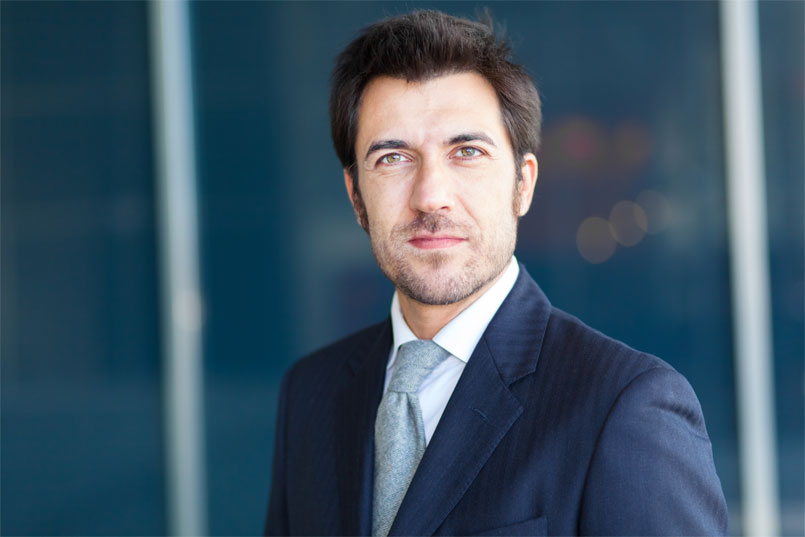
FUE and Hair Grafts
Worldwide, hair loss affects almost 1/3 of the population. On average, a person loses 100 strands of hair a day, and there are many causes of hair loss. For men, the major cause of hair loss is hereditary and caused by an increase in the production of the hormone dihydrotestosterone (DHT). Other things that may cause hair loss for both men and women include medications, diet, extreme stress, and trauma.
For those suffering significant hair loss, hair transplants are becoming an increasingly popular procedure that offers a permanent solution to men and women suffering from hair loss while maintaining a natural look. Hair transplant specialists, Dr. Jonathan Huber and Dr. Robert Jones, are renowned for exceptional hair transplant results and are 100% focused on hair transplantation and restoration.
What is hair transplantation?
A minimally invasive surgical procedure where circles of skin from the back of the scalp are excised as single units and implanted into the skin at the crown and hairline. Since hair loss starts from one region and spreads to other parts of the head, a hair transplant is highly effective at addressing this loss. Find the best hair transplant surgeons in Dubai.
How are hair transplants performed?
FUE – Follicular Unit Excision (FUE) hair transplants are one of the two main procedures used today. With an FUE procedure, hair follicles are individually extracted from the back of the patient’s head and transplanted to the recipient area (where the hair is thinning).
FUT – Follicular Unit Transplantation (FUT) differs from FUE in that the donor hair is extracted in a strip, rather than individually. Therefore, FUT is often referred to as a “strip procedure.” Although both procedures are effective, FUT is more invasive and can leave a visible scar on the back of the head, meaning it is not the best option for those who want to cut their hair short.
Initial Consultation
During a patient’s initial consultation, one of the most common questions asked of Dr. Huber and Dr. Jones is: “How many hair grafts will I need to achieve natural, full hair?” To answer this question, certain factors are taken into consideration to ensure the patient gets the most out of their investment. Those factors include:
- The individual’s degree of hair loss and donor supply, as well as hair characteristics.
- The number of possible procedures and time commitment.
- The short-and long-term cost for the patient.
After the patient’s initial consultation, Dr. Huber and Dr. Jones will determine how many hair grafts will be needed in the affected area. Generally, the more hair that is lost, the more grafts you will need. These grafts could range from 1000 to 5000 or more.
Note: Dark, coarser hair may require fewer hair grafts to the cover the same area as compared to lighter coloured, fine hair. Individual consultation is the best way for Dr. Huber and Dr. Jones to establish a realistic number of hair grafts needed to cover thinning hair or baldness.
What can I expect with a 1000-2000 Hair Graft?
Hair grafts under 2000 are required when there is not a lot of substantial hair loss. These low numbers of grafts are typically suitable for receding hairlines, thinning hair or small patches of hair loss on the crown of the head.
Micro-grafting inserts larger grafts at the back of the scalp and progressively inserting smaller grafts towards the front to give a natural-looking appearance. Mini grafting is also used for repair work irrespective of the patient’s hair colour or texture.
The key to the effectiveness and fineness of the grafts lie in the fact that scalp hair tends to grow in tiny bundles called follicular units, rather than individually. To ensure a natural-looking hairline, as well as a full head of hair, Dr. Huber and Dr. Jones implant between 1,000 and 2,000 grafts per session.
Despite age and hairstyle, many people have successfully undergone 1,000-2,000-unit hair transplants at our facility. Toronto Hair Transplant Centre produces consistent, natural results and this number of grafts is great for repairing the hairline and early-stage hair loss. In the past, natural-looking hairlines were difficult to achieve with hair transplant surgery; however, revolutionary, new techniques make it possible to attain a new, natural hairline.
This is quite an accomplishment after the stares many people endured in the past because of bad hair plugs. The newly transplanted hair begins to grow at around 10 to 20 weeks at a rate of 1 centimetre per month. It is long enough to be groomed in about 6 months and, in most cases, will be fully grown in at one year. Once removed and grafted, hairs continue their lifecycles on another part of the scalp, irrespective of age or hair colour.
What can I expect with a 2000-3000 Hair Graft?
Hair grafts between 2000 and 3000 are appropriate when the patient has significant hair loss on the sides, frontal or middle scalp and crown of the head. This number of hair grafts is a normal amount needed to restore hair loss and achieve a natural look. It is important the patient has realistic expectations as to what this surgery can achieve, and the primary goal should be to achieve a flattering and natural looking head of hair and not one in which there are bald patches next to your donor area.
There are important factors to consider with 2000-3000 hair grafts, such as the age of the patient. Male pattern baldness advances over time and the older you are the greater the amount of hair loss. Another important factor to consider is the texture of the patient’s hair.
Thick, coarse, curly hair tends to look more natural and covers the scalp better than fine hair. Plus, if the patient has thick, curly hair, the rate of coverage of the scalp will be double or even triple that of someone with thin hair. If your hair is fine, you may need several transplant sessions in order to cover your bald area. It is now possible for 2,000 to 3,000 follicular units to be placed in a single transplant session.
3500-5000+Hair Grafts
Hair grafts above 3500 are suitable when the patient has large amounts of hair loss or complete baldness in certain areas on the head. At this point, patients are often are concerned about not being able to have their hair restored. As recognized pioneers in FUE hair surgery, Dr. Huber and Dr. Jones are eminently qualified to provide the patient with outstanding results.
The FUE hair transplant is a minimally evasive procedure and both Drs. Huber and Jones remain confident in their abilities to promote new hair growth even in the most extreme cases.
At the Toronto Hair Transplant Centre, Dr. Huber and Dr. Jones are among the most experienced FUE physicians in North America. Dr. Huber’s and Dr. Jones’ primary goal is to help the patient understand how close he or she can come to meeting their personal needs and expectations and with proper planning, Dr. Huber and Dr Jones can offer long-lasting satisfaction.
Top 5 Benefits of FUE Hair Transplantation Surgery
Hair restoration can be a life-changing procedure for men and women who have felt embarrassed about their hair loss. Here are some of the advantages this surgery can bring:
1. Improved Looks and Self-Esteem
This type of procedure will provide you with the opportunity to feel proud of the way you look, maybe for the first time in several years.
2. Natural-Looking Results
Despite the rapid advancements in hair restoration technology, many people who are good candidates for a hair transplant avoid the procedure because they believe their results will look fake. In fact, surgeons have now perfected the craft to the point that when the results are final, nobody will be able to detect that you had anything done.
3. Minimally Invasive
While hair transplantation is considered a surgical procedure, with FUE, there are no sutures, bandages or incisions to manage. It is a same-day procedure, and you can go back to work the next day if you so choose – though it’s far more common for patients to take a day or two off to rest and recover.
4. Permanent Results
The hair growing on the back and sides of your head is genetically programmed to be permanent. The hair retains this quality after getting transplanted to the top of the head too.
5) No More Wigs, Hats or Scarves
Once your hair grows in, you will be able to cut, wash, colour and style it in any manner you wish. You won’t have to mask your hair loss with hats or wigs and can instead step out with full confidence in your healthy, growing head of hair.
If you have any questions about hair transplantation such as how many hair grafts you may need, we invite you to contact the Toronto Hair Transplant Centre today to schedule a no-charge consultation with one of our doctors.
The post FUE and Hair Grafts appeared first on Toronto Hair Transplant Centre.
Related Topics To “FUE Hair Grafts”
Related Posts
Find the best Hair transplant surgeons in Dubai
Hair transplant clinics in Dubai
Scalp Burn Scar Repair With FUE
How to fight Stress For Healthy Hair
Table of Contents

